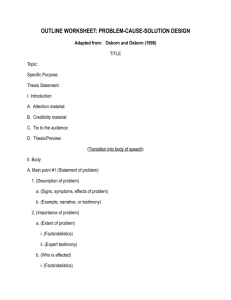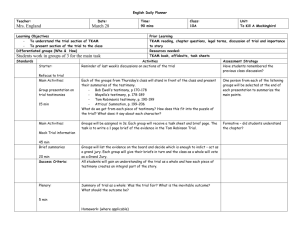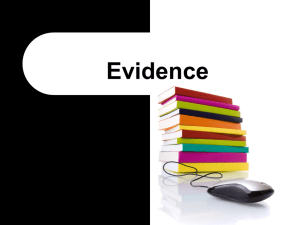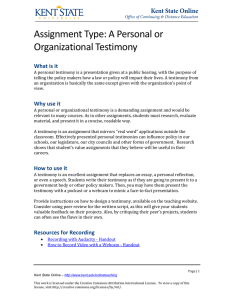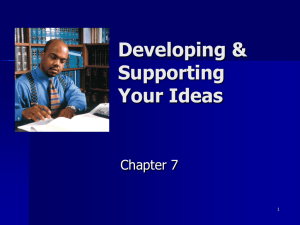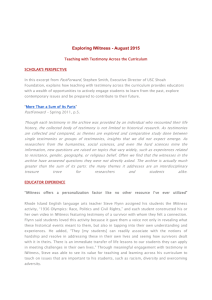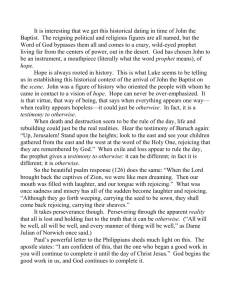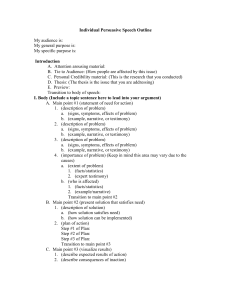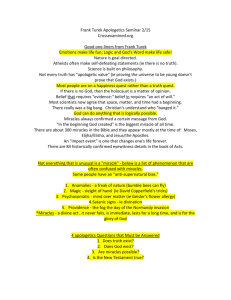File
advertisement
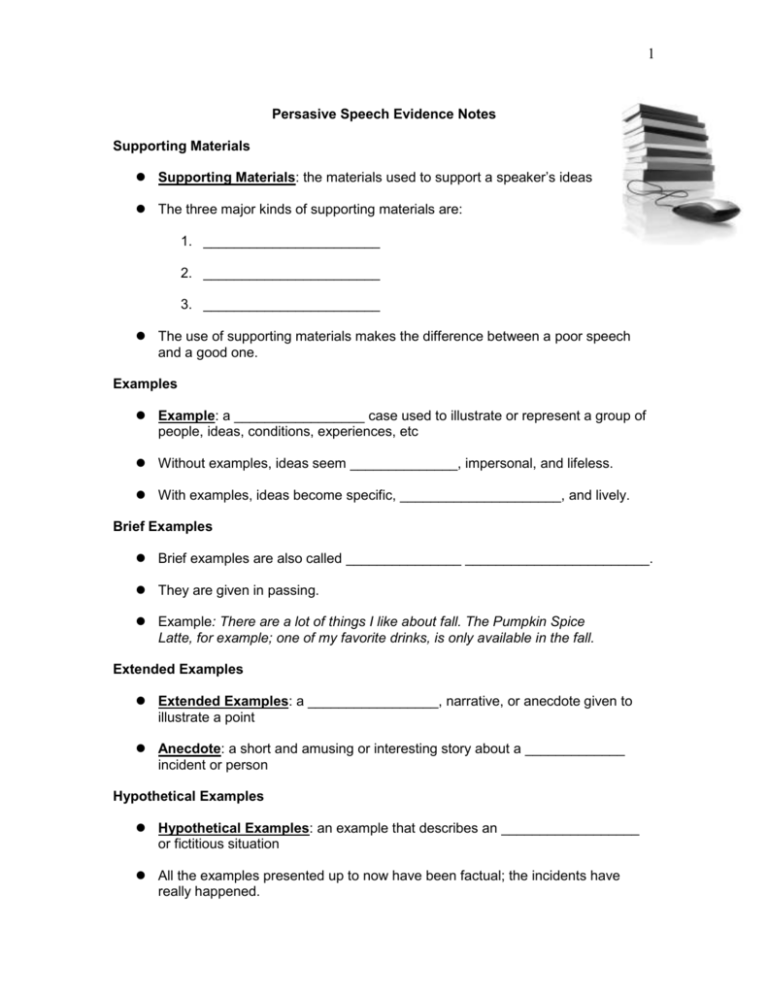
1 Persasive Speech Evidence Notes Supporting Materials Supporting Materials: the materials used to support a speaker’s ideas The three major kinds of supporting materials are: 1. _______________________ 2. _______________________ 3. _______________________ The use of supporting materials makes the difference between a poor speech and a good one. Examples Example: a _________________ case used to illustrate or represent a group of people, ideas, conditions, experiences, etc Without examples, ideas seem ______________, impersonal, and lifeless. With examples, ideas become specific, _____________________, and lively. Brief Examples Brief examples are also called _______________ ________________________. They are given in passing. Example: There are a lot of things I like about fall. The Pumpkin Spice Latte, for example; one of my favorite drinks, is only available in the fall. Extended Examples Extended Examples: a _________________, narrative, or anecdote given to illustrate a point Anecdote: a short and amusing or interesting story about a _____________ incident or person Hypothetical Examples Hypothetical Examples: an example that describes an __________________ or fictitious situation All the examples presented up to now have been factual; the incidents have really happened. 2 Tips for Using Examples Use examples to _______________ your ideas. Use examples to ____________________ your ideas. Use examples to personalize your ideas…people are interested in ___________________. Statistics Statistics can be used to show the magnitude or _______________________ of an issue. Tips for Using Statistics Use statistics to quantify your ideas or give your ideas numerical precision. Use statistics sparingly – the audience will get bored if you use too many statistics, only use those that are most ____________________. Identify the _________________ of your statistics. _________________ your statistics – statistics don’t speak for themselves…when you use statistics in your speeches, think of how you can make them meaningful to your audience. Make Statistics Meaningful Example: According to Jennifer Lee’s new book, “The Fortune Cookie Chronicles,” there are some 43,000 Chinese restaurants in the US. That’s more than all the McDonalds, Burger Kings, and KFCs combined. Testimony Testimony: quotations or paraphrases used to __________________ a point Expert Testimony Expert Testimony: testimony from people who are recognized experts in their field This is a good way to give __________________ to your speech. It shows that you are not just mouthing your own opinions, but that your position is supported by people who are knowledgeable about that topic. 3 Peer Testimony Peer Testimony: testimony from __________________ ________________ with firsthand experience or insight on a topic It gives a more personal viewpoint on issues than can be gained from expert testimony. Quoting vs. Paraphrasing Direct quote: testimony that is presented ___________ for ___________ Paraphrase: to restate or summarize a source’s ideas in one’s own words Cite Sources As You Speak You must identify your sources orally as you are ___________________. Unlike a written bibliography, oral source citations _______ __________ follow a _________________ format. What you include depends on: – your topic – your audience – the kind of supporting material you are using – the claim you are making Tell your audience ________________ that they will know where you got your information and why they should accept it as ________________ and credible. What to Cite The book, magazine, newspaper, or __________________ you are citing The _________________ or ___________________ _____________________ of the document The author’s qualifications with regard to the topic The _______________ on which the document was published, posted, or updated 4 How to Cite Your Sources as You Speak Example The power of earthquakes can be seen in more than just the damage they cause. Kenneth Chang, science reporter for the New York Times, reported in the paper’s March 13, 2011, issue that the recent quake in Japan widened the country by 13 feet. The author The author’s qualifications The newspaper being cited The date of publication Example 2 In an article posted on MSNBC.com in March 2011, Harry Johns, president and chief executive of the Alzheimer’s Association, stated, “Alzheimer’s disease doesn’t just affect those with it. It invades families and the lives of everyone around them. The author The author’s qualifications The newspaper being cited The date of publication
